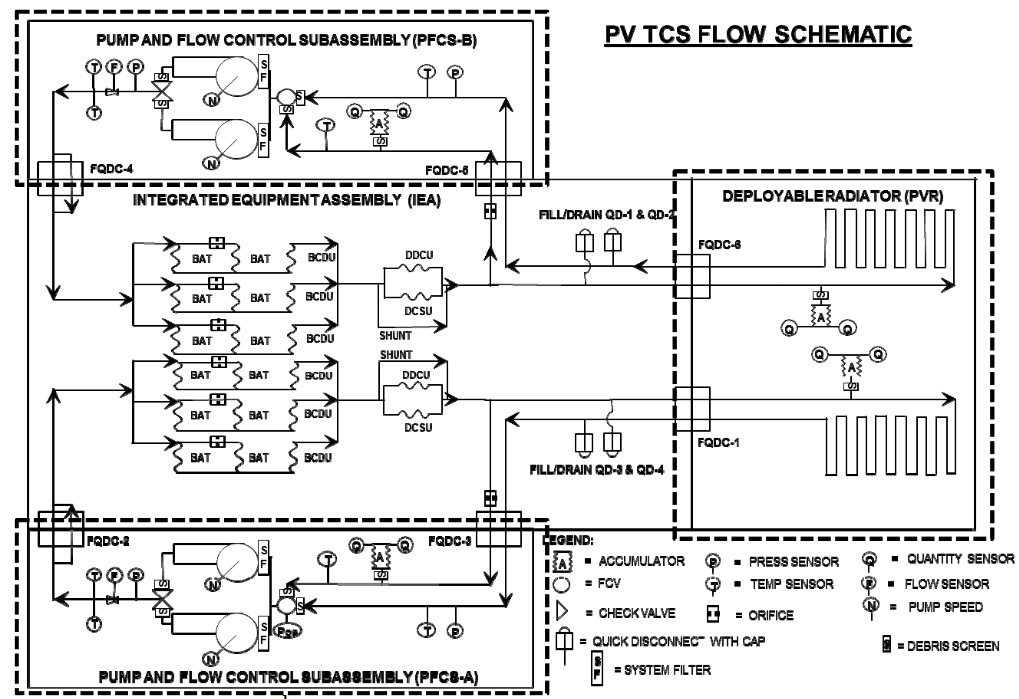PFCS – Pump Flow Control Subassembly
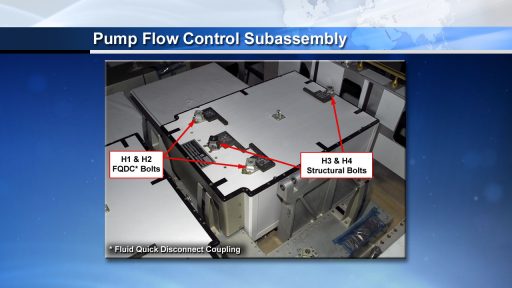
The third Trunk Payload riding on the Dragon SpX-14 mission is not a science/utilization instrument like its two companions but a potentially critical spare part for the Space Station’s Thermal Control System. The Pump Flow Control Subassembly, PFCS for short, is a critical component of the ISS Photovoltaic Thermal Control System (PVTCS) in that it routes ammonia coolant to transport heat from the various electrical assemblies located within the Integrated Equipment Assembly to a Photovoltaic Radiator where it is dissipated into space.
Without a functioning PFCS, its corresponding power channel has to be turned off since heat from solar power generation can no-longer be radiated overboard. ISS management desires to have a stockpile of critical parts like the PFCS available on board ISS to ensure a spacewalk on short notice can return the power channel to service via replacement of the PFCS.
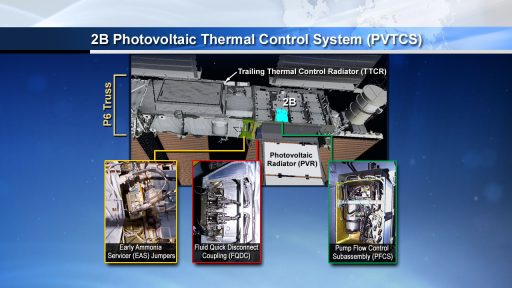
Such a spacewalk occurred once to date in ISS history when ISS Power Channel 2B went down in 2013 due to a major ammonia leak on the PFCS, necessitating a five-and-a-half-hour spacewalk by Tom Marshburn and Chris Cassidy who successfully swapped the failed PFCS with a functioning, but used spare.
In total, ISS has eight PFCS units in operation – one for each power channel. At present (March 2018), there are two viable PFCS spares on ISS – a new unit installed on External Stowage Platform 1 which was among the first two external spare parts delivered to ISS back in March of 2001 on the STS-102 mission; and one previously used PFCS resides on the P6 truss of ISS after functioning within the Early External Thermal Control System (EETCS) from 2000 to 2007. The spare installed as part of the 2013 contingency EVA was also a former EETCS component with seven years of service under its belt.
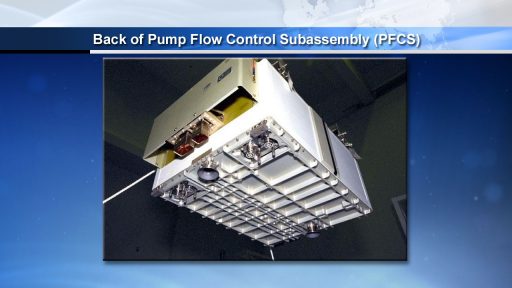
Having one used spare and one new but 17-year old unit leaves some uncertainty on their functionality and created the desire of launching a pristine unit to ISS to protect for the case of PFCS failures. Such failures are not fully unexpected since they were designed for a service life of 15 years which some that are currently in operation have already exceeded.
The 107-Kilogram PFCS is the heart of the PVTCS system as it consists of all the pumping capacity, valves and controls needed to circulate the heat transfer fluid, anhydrous ammonia, through the heat exchangers and the radiator, also regulating the temperature of the loop through setting the appropriate flow rates. Each unit is 102 by 74 by 48 centimeters in size.
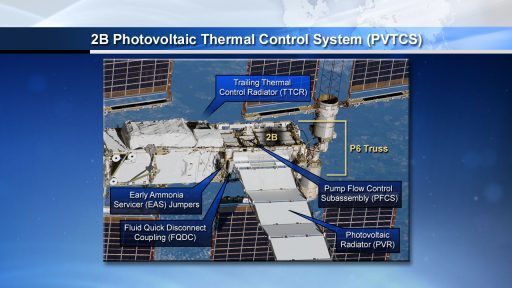
The eight individual Power Channels of the International Space Station are cooled by the Photovoltaic Thermal Control System (PVTCS) that circulates ammonia through Photovoltaic Radiators (PVRs) to dissipate excess heat generated by solar power generation in the Solar Arrays Wings and keep the EPS (Electrical Power System) at a stable temperature. There are four PVRs on ISS, one on each Truss Segment that features Solar Array Wings. Each PVR has two Decks, each supporting an individual PVTCS channel corresponding to the two power channels fed by the two SAWs. In case of the P6 PVR, channels 2B and 4B share one radiator.
The other ISS Systems are thermally controlled by the External Thermal Control System (ETCS) that uses Heat Rejection Subsystem Radiators (HRSRs) that cool all other electronics that are not part of the Photovoltaic System.
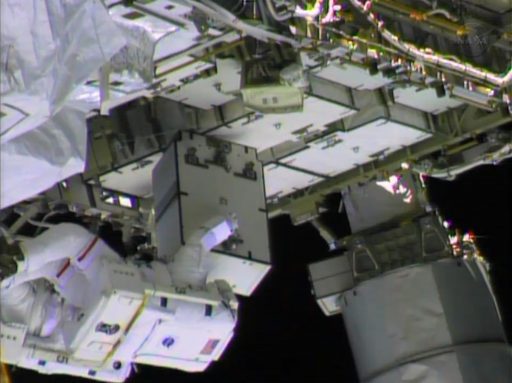
The systems are strictly separated to reduce the overall operating temperature of the ETCS Loops and to avoid technical challenges coming with cooling fluid being transferred through the rotating SARJs (Solar Alpha Rotary Joint). HRSRs and PVRs are not compatible due to a different cooling loop architecture.
The P6 Truss Segment is also outfitted with two EETCS Radiators (Early External Thermal Control System) that were used from 2000 to 2007 when the P6 Truss was located on top of the Z1 Segment as part of the early Space Station configuration. P6 has a TTCR (Trailing Thermal Control Radiator) and a STCR (Starboard TCR). These names are coming from the system’s past life, back when they were deployed in position on top of Z1.
The EETCS provided thermal control to the ISS Modules while the assembly phase of ISS was still underway and the HRS was still under construction. Back in 2007, on Space Shuttle Mission STS-120, the two EETCS radiators were stowed and the P6 Truss took its spot next to P5. At that time the HRS was in place and the EETCS was no longer needed.
